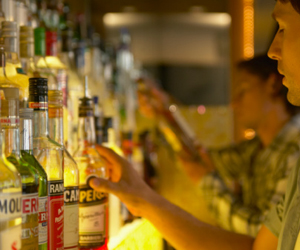Push It Back

When an alcoholic sees a drink, it’s hard to resist the impulsive response to approach it. Turning that impulse to grab it into an impulse to avoid it may help. A study published in Psychological Science found that a new cognitive-bias modification (CBM) treatment involving approach-avoidance tasks may help alcoholics stay abstinent from drinking.
Alcoholic volunteers were trained to push away pictures of alcoholic drinks. When tested a week later, their approach bias for alcohol had changed to avoidance bias, compared to the control group that showed no such changes. Patients went through abstinence-based cognitive behavior therapy for three months and were assessed on their sobriety a year later. As is typical, many patients had relapsed – but only 46 percent of the CBM trained group, compared with 59 percent of the others. Psychological scientist Reinout Wiers concluded that “adding this intervention to regular treatment helps people stay abstinent.”
It may be too hard to say no to alcohol once it’s already been approached. The trick may be to learn how to push the temptation back.
Wiers, R.W., Eberl, C., Rinck, M., Becker, E.S., & Lindenmeyer, J. (2011). Retraining Automatic Action Tendencies Changes Alcoholic Patients’ Approach Bias for Alcohol and Improves Treatment Outcome. Psychological Science.





APS regularly opens certain online articles for discussion on our website. Effective February 2021, you must be a logged-in APS member to post comments. By posting a comment, you agree to our Community Guidelines and the display of your profile information, including your name and affiliation. Any opinions, findings, conclusions, or recommendations present in article comments are those of the writers and do not necessarily reflect the views of APS or the article’s author. For more information, please see our Community Guidelines.
Please login with your APS account to comment.